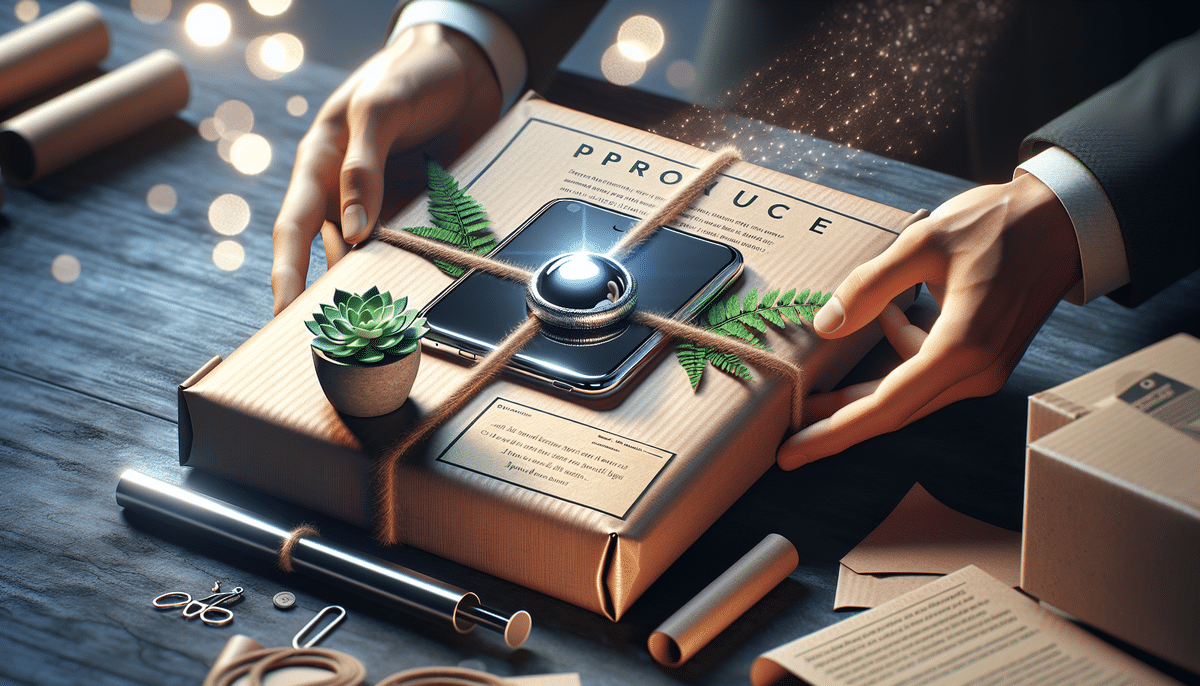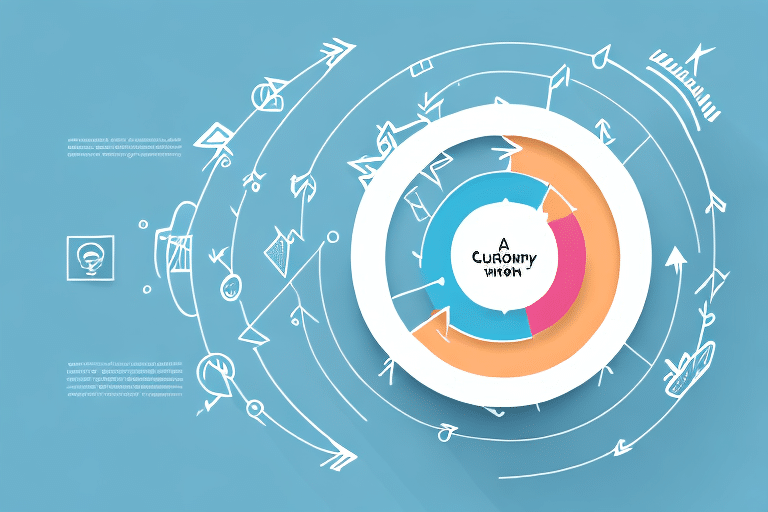Unpacking the Anatomy of an Unboxing Experience
Have you ever eagerly waited for a package to arrive, only to be disappointed by the unboxing experience? Or have you been pleasantly surprised by the care and attention put into the packaging and presentation of a product? The way a product is presented and unboxed can significantly influence a consumer's overall perception of the brand and their likelihood to make a repeat purchase.
Why Unboxing Experience Matters to Consumers
The unboxing experience extends beyond merely opening a package; it encapsulates the entire purchase journey, from online browsing and selection to the moment the product lands in your hands. According to a 2023 ShipScience study, 72% of consumers consider the unboxing experience when evaluating a brand. An enjoyable unboxing can generate excitement and foster a lasting positive impression, increasing the chances of repeat purchases.
Moreover, a well-designed unboxing experience can enhance the perceived value of a product. Thoughtful touches like personalized notes or complimentary samples can make consumers feel they've received a premium product, boosting customer loyalty and encouraging positive word-of-mouth marketing.
- Enhances brand perception
- Increases perceived product value
- Boosts customer loyalty and retention
- Encourages social sharing and word-of-mouth
The Psychology Behind the Unboxing Experience
Unboxing leverages the psychology of anticipation and reward. Opening a package can trigger the release of dopamine in the brain, creating feelings of pleasure and satisfaction. By designing packaging that builds excitement, brands can foster positive associations with their products.
The trend of unboxing videos on platforms like YouTube and Instagram taps into this psychology. These videos allow viewers to experience the excitement vicariously, contributing to the rise of influencer marketing. A recent report shows that 60% of consumers trust influencer recommendations, highlighting the power of influencer-led unboxing experiences.
However, it's crucial that the product itself meets or exceeds expectations set by the packaging. Failure to do so can lead to disappointment and negative reviews, undermining the brand's reputation.
Elements that Make Up a Great Unboxing Experience
A memorable unboxing experience comprises several key elements:
- Visual Appeal: Attractive design and high-quality materials create a strong first impression.
- Ease of Opening: Packaging should be easy to open without excessive effort or tools.
- Surprise and Delight: Extras like personalized notes or free samples add unexpected value.
- Environmental Consciousness: Sustainable packaging resonates with eco-conscious consumers.
Additionally, the presentation of the product inside the packaging should be neat and accessible, minimizing unnecessary materials. Including clear instructions or usage tips can further enhance the customer experience.
The Role of Packaging in the Unboxing Experience
Packaging serves more than just protective functions; it's a critical touchpoint for brand expression. It should align with the brand’s values, style, and personality while being consistent with the product inside. For example, luxury products often feature sleek, minimalist packaging to reflect their premium nature.
Packaging can also act as a marketing tool. Eye-catching and unique designs can attract potential customers and increase brand recognition. According to a 2023 packaging trends report, 58% of consumers are more likely to purchase a product if the packaging is appealing.
Environmental impact is increasingly important. Sustainable packaging options, such as recycled materials or biodegradable options, not only reduce the brand’s carbon footprint but also appeal to consumers who prioritize environmental responsibility.
How Brands Can Create Memorable Unboxing Experiences
Brands can craft memorable unboxing experiences by focusing on detail and personalization. Investing in high-quality materials, incorporating personalized touches, and using visually striking designs can differentiate a brand in a crowded market.
Surprise elements, such as small gifts, handwritten notes, or unexpected design features, can enhance the excitement and make the experience more memorable. For instance, including a limited-edition sticker or a sample of another product can delight customers and encourage them to share their experience on social media.
Integrating digital elements, like QR codes that link to exclusive content or thank you videos from the brand, can add an interactive dimension to the unboxing experience, further engaging customers.
Best Practices for Designing Packaging for a Great Unboxing Experience
When designing packaging, brands should prioritize the customer's needs and preferences. Key best practices include:
- Ease of Use: Ensure packaging is easy to open and the product is easily accessible without damage.
- Emotional Connection: Use personalized packaging or messages to create a bond with the customer.
- Eco-Friendly Materials: Opt for sustainable materials to appeal to environmentally conscious consumers.
- Consistent Aesthetics: Maintain visual consistency with the brand’s identity through colors, typography, and graphics.
By balancing functionality with visual appeal, brands can create packaging that not only protects the product but also enhances the overall unboxing experience, leaving a positive and lasting impression.
The Impact of Social Media on the Unboxing Experience
Social media has amplified the significance of the unboxing experience, as customers frequently share their unboxing moments online. Creating Instagram-worthy packaging encourages social sharing, which can significantly boost brand visibility. According to a 2023 survey, 65% of consumers have made a purchase based on social media recommendations.
Influencer marketing plays a pivotal role, with influencers showcasing products through unboxing videos, thereby reaching wider audiences and enhancing brand credibility. Collaborating with influencers can lead to increased brand awareness and sales, as followers trust their recommendations.
Personalized unboxing experiences, informed by customer data from social media interactions, allow brands to tailor packaging to individual preferences. For example, a beauty brand might customize packaging colors based on a customer’s favorite hues gleaned from their social media activity.
Case Studies: Successful Brands with Amazing Unboxing Experiences
Several brands have excelled in creating exceptional unboxing experiences:
- Apple: Known for its clean and minimalist packaging, Apple reinforces its brand image of simplicity and innovation.
- Glossier: Utilizes pastel pink bubble wrap and personalized stickers, making the unboxing process fun and memorable.
- Lush Cosmetics: Emphasizes sustainability with recycled materials and features colorful, hand-drawn illustrations. Each product is personally labeled, adding a unique touch that resonates with customers.
These brands demonstrate how thoughtful packaging can enhance the customer experience, strengthen brand identity, and drive loyalty.
Future of the Unboxing Experience: Predictions and Trends
The future of the unboxing experience is expected to focus on sustainability, personalization, and digital integration. Consumers are increasingly seeking eco-friendly packaging options, such as recyclable or biodegradable materials. Personalization will continue to be paramount, with brands tailoring experiences to individual preferences.
Digital integration, including augmented reality (AR) and smart packaging, is poised to revolutionize unboxing. AR can provide interactive virtual experiences, allowing customers to engage with products in a novel way before opening the package. Smart packaging with sensors can offer functionalities like tracking product freshness or ensuring optimal shipping conditions.
Additionally, the incorporation of interactive elements, such as QR codes linking to exclusive content or how-to videos, will enhance engagement and provide added value to customers.
Measuring the Success of an Unboxing Experience: Metrics to Consider
To evaluate the effectiveness of their unboxing experiences, brands should monitor key metrics:
- Customer Feedback and Reviews: Direct feedback provides insights into customer satisfaction and areas for improvement.
- Social Media Engagement: Likes, shares, and user-generated content indicate the unboxing experience’s resonance with consumers.
- Repeat Purchase Rate: High repeat rates suggest that the unboxing experience contributes to customer loyalty.
- Net Promoter Score (NPS): Measures the likelihood of customers recommending the brand to others.
Tracking these metrics helps brands identify strengths and address weaknesses in their unboxing strategies, ensuring continuous improvement and sustained customer satisfaction.
Common Mistakes to Avoid When Creating an Unboxing Experience
Brands should steer clear of common pitfalls that can detract from the unboxing experience:
- Poorly Designed Packaging: Inadequate design can fail to impress or protect the product.
- Difficult-to-Open Packaging: Frustrates customers and can lead to a negative first impression.
- Lack of Surprise and Delight: Missing unexpected elements can make the experience forgettable.
- Environmental Unfriendliness: Non-sustainable packaging can alienate eco-conscious consumers.
By avoiding these mistakes, brands can ensure a positive and memorable unboxing experience that aligns with customer expectations.
Out-of-the-Box Ideas for Unique and Creative Unboxing Experiences
To stand out, brands can implement innovative unboxing ideas:
- Scented Packaging: Incorporating scents, such as coffee-scented packaging for coffee products, enhances the sensory experience.
- Gamification Elements: Adding puzzles or scavenger hunts within the packaging creates an interactive and engaging unboxing process.
- Augmented Reality (AR): Integrating AR can offer immersive experiences, such as virtual try-ons or interactive product demonstrations.
- Storytelling: Including narratives or brand stories within the packaging can deepen the emotional connection with customers.
These creative approaches can differentiate a brand and make the unboxing experience more memorable and shareable.
How to Incorporate Personalization into Your Unboxing Experience
Personalization can significantly enhance the unboxing experience by making customers feel valued and unique. Strategies include:
- Customized Packaging: Adding the customer’s name or a personalized message on the packaging creates a personal touch.
- Personalized Notes: Handwritten thank-you notes or tailored messages can strengthen the customer relationship.
- Product Recommendations: Including suggestions based on the customer’s purchase history or preferences can enhance the shopping experience.
Leveraging customer data to tailor the unboxing experience not only increases satisfaction but also fosters loyalty and encourages repeat business.
In conclusion, the unboxing experience is a pivotal component of the overall customer journey, significantly shaping perceptions of both the product and the brand. By investing in thoughtful, personalized, and sustainable packaging, brands can create memorable unboxing experiences that drive excitement, build loyalty, and enhance customer satisfaction.






















